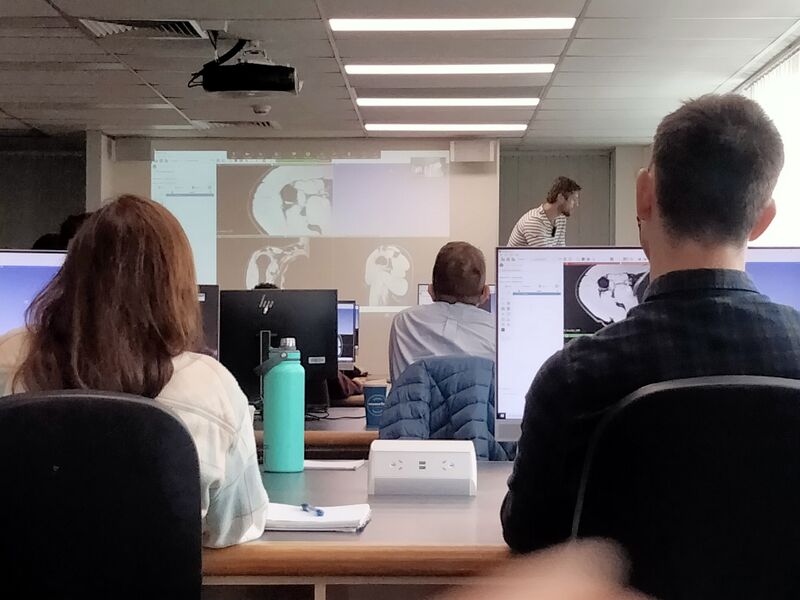Centre Training: 3D Slicer 9/5/23
Manual and automated segmentation of medical images with 3D Slicer

Today we delivered our first technical workshop of the year: “Manual and automated segmentation of medical images with 3D Slicer” presented by senior research fellow NeuRA Frontier research/UNSW and centre post-doctoral fellow Dr Bart Bolsterlee. This was a valuable workshop for the centre as it developed the skills of PhD, post-doctoral, and centre members in 3D Slicer which is a commonly used open-source platform for medical image analysis in the field of biomechanics. The 3D slicer is used to segment musculoskeletal structures from 3D MRI and CT scans to a graphical user interface which can map the placement of anatomical structures within the arm.
Dr Bart Bolsterlee structured the workshop to target the specific skills essential for 3D model creation. The first of which is quantitative analyses of medical images is segmentation, medical image segmentation is the task of labelling, or annotating, an object of interest. Then he moved on to the creation of 3D surface models. He also covered the use of the software AI features which can create a 3D surface model advancement, which makes Research more efficient with the ability to work on larger data sets in shorter periods.
This is also a powerful clinical use with 3D-slicer software connecting to other platforms such as KUKA which is used for robots for visualization of 3D models. This adaptability of the program extends its use to Centre Programs Two, which is exploring ways in which robots and software can assist in surgery. With the centre’s focus on collaboration and this technology’s potential use in clinical settings, it was also a pleasure to have members from our industry partner Akunah attend alongside Dr Mohammad Jomaa, Dr Surasak S., Dr Philipp Loesel from the ARC Training Centre for M3D Innovation situated at The Australian National University. This opportunity opens discussion on further uses of this program across centre with input from experts in clinic and industry backgrounds.
Thank you, Dr Bart Bolsterlee for sharing your expertise in 3D slicer software and your background knowledge in DTI (MRI technique). You and your work are an asset to our research in biomechanics and to support the development of student’s technical skills that ultimate allow us to develop the future leaders and workforce in Australia’s medical industry.

Dr Bart Bolsterlee
